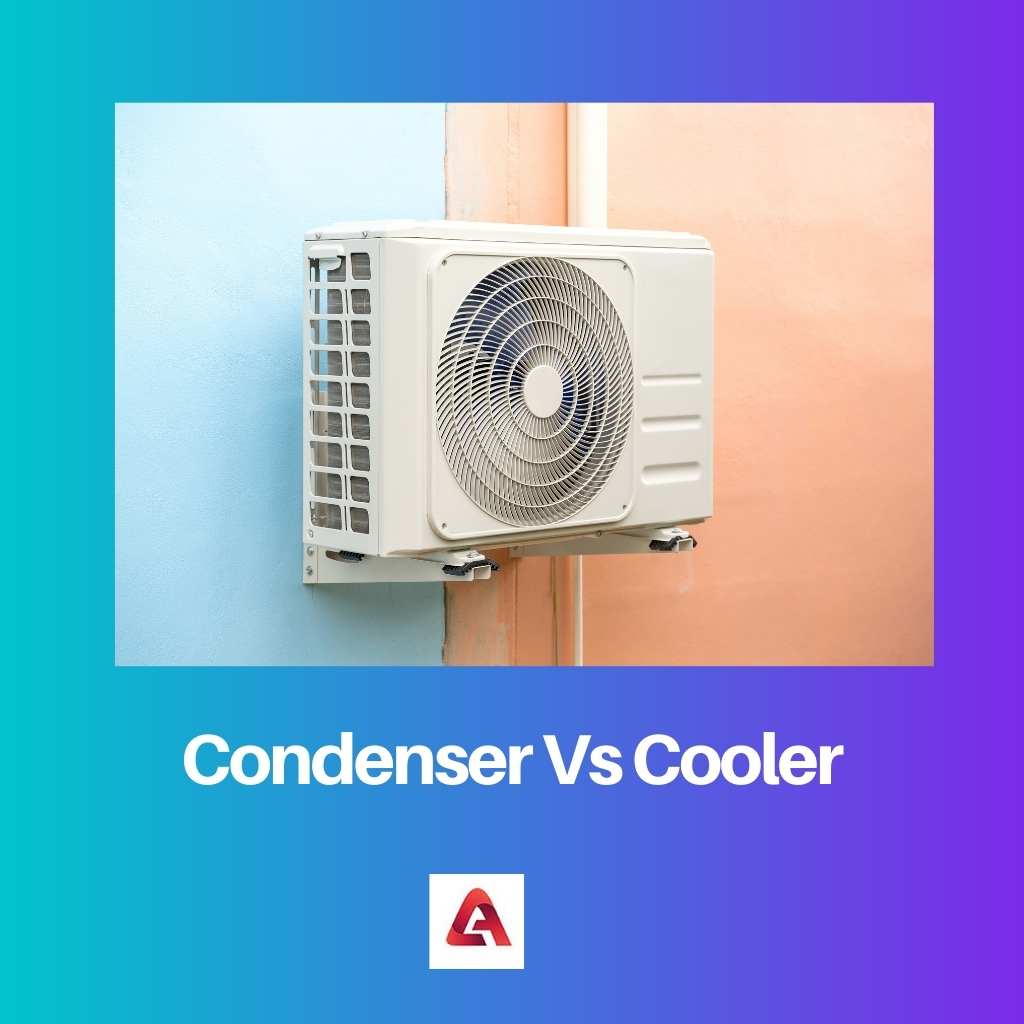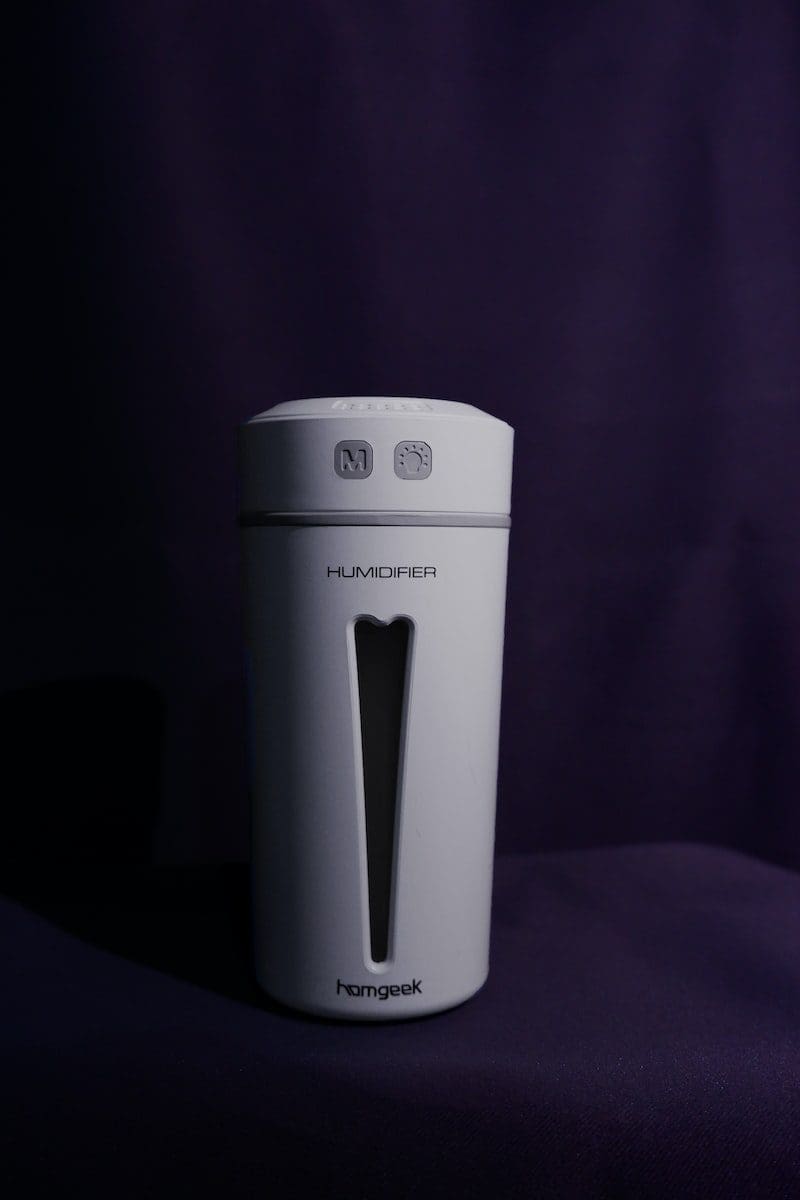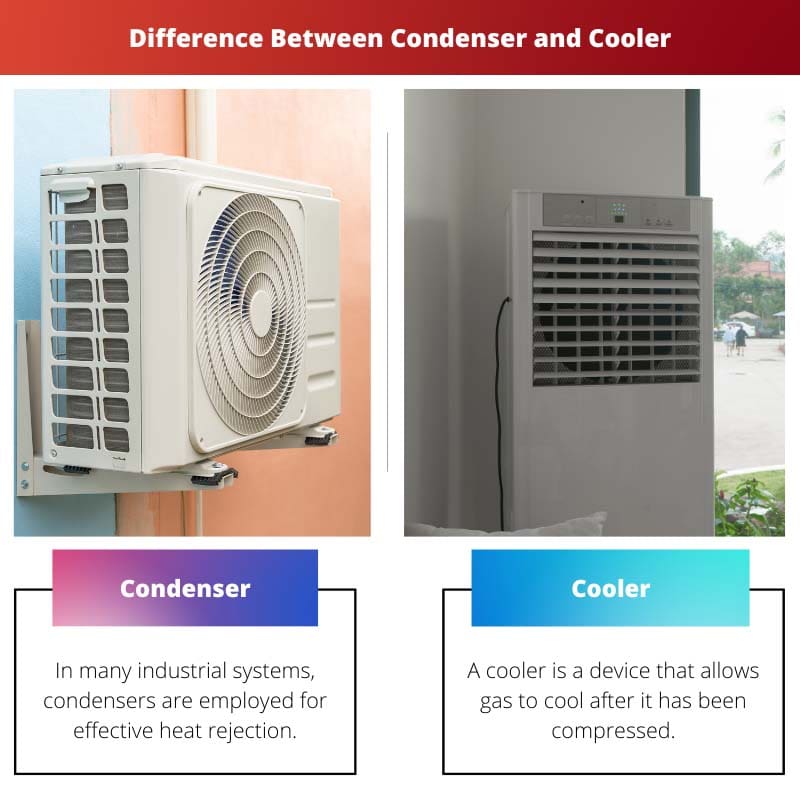Electronics is something that every person requires in today’s world. Whether it is a car, a mobile phone, or a refrigerator, these are all items that are required and used daily.
Work becomes easier and simpler with the help of electronics, and the following items are required for a refrigerator: a condenser and a cooler.
Key Takeaways
- Condensers are heat exchangers that transfer heat from a working fluid to a cooling medium, while coolers are devices that lower the temperature of an object or substance.
- Condensers are commonly used in refrigeration and air conditioning systems, whereas coolers have a wider range of applications, including food and beverage storage and electronic cooling.
- The working principle of condensers involves phase change (liquid to gas or vice versa), while coolers use conduction, convection, or radiation to dissipate heat.
Condenser Vs Cooler
The difference between a condenser and a cooler is that a condenser is indeed a heat transfer which is employed to convert a gaseous element to a liquid state. On the other hand, a cooler is used to or functions to lower the temperature of a liquid from high to low.

In many industrial systems, condensers are employed for effective heat rejection. Condensers are available in a variety of styles and sizes, spanning from extremely ranging in size from tiny (hand-held) to extremely large (industrial level units utilized in plant processes).
A condenser, for example, is a device that transfers heat from the device’s structure to the surrounding air.
A cooler is a device that allows gas to cool after it has been compressed. When a gas is compressed, it raises its temperature by increasing its internal energy.
A cooler in a gas compressor is a heat transfer that removes any surplus heat created. To avoid condensation from causing blade erosion downstream in a cooler system, a condensation control algorithm is frequently used.
Comparison Table
| Parameters of Comparison | Condenser | Cooler |
|---|---|---|
| Phase Change | The condenser would change the gaseous phase into something of a liquid state by condensing it. | The cooler is designed to keep the material cool without causing phase shifts. |
| Configuration | The baffle plate architecture of a condenser is installed left and right. | Coolers are positioned horizontally and bottom. |
| Levels | There is no liquid level metre or water level adjustment port on the condenser. | The cooler comes with a liquid level metre and a water level adjustment port. |
| Inlet/Outflow Tubes | The condenser’s liquid outflow is located at the bottom of the vessel, and the diameter of the outlet tube differs greatly. | The cooler’s gas input and outflow are on the top of the vessel, and the tube sizes are nearly similar. |
| Invention | Christian Weigel, a Swedish-German chemist, constructed the first scientific condenser, (try and counter condenser), in 1771. | .The first turbo-intercooler was used by DAF Vehicles of Eindhoven, Netherlands, in 1973. |
What Is Condenser?
A heat exchange instrument called a condenser transmits heat from a producing liquid (including such freshwater in a heating element) to a primary fluid or atmospheric air.
The condenser takes advantage of both the improved heat transfer that happens during phase transformations, such as when vapor condenses into the fluid.
The degree of the vapor reaching the condenser is higher than the parent fluid’s temperature. The vapor finds balance, condenses into a fluid, and emits a considerable quantity of heat transfer as it cools.
The amount of vapor diminishes as the project develops, whereas the volume of water increases until only liquid remains at the condenser’s exit.
The primary fluid, the working liquid, the construction, and the substance are all factors to consider while designing a condenser. Water, air, refrigerants, and phase-change compounds are examples of secondary fluids.
In comparison to other cooling options, condensers have two major design advantages: When it comes to heat transport, using latent heat rather than sensible heat is far more efficient.
During condensation, the working fluid temperature, stays the same, reducing the temperature differential between the operating and primary fluids.
Air conditioners, industrial chemical operations like condensers are required in distilling, steaming power stations, as well as other heat-exchange systems. As a coolant, many condensers employ cooling water or lower atmosphere.

What Is Cooler?
The surplus energy from the first stage of the two-stage blower is removed via coolers. Due to its inherent effectiveness, two-stage air turbines are produced.
The cooler’s cooling duty contributes to the improved efficiency, moving closer to the Carnot cycle. By removing the energy of pressure from the first stage’s output, the gas pack is sintered.
The second phase can generate more work due to the constant compression ratio. The addition of a cooler to the system necessitates a hefty financial investment.
Coolers, as the name implies, absorb heat from the air and deliver cold air into the motor intake for improved combustion. Coolers contain blades that circulate air and chill before supplying it to the motor, which then spools the turbocharged or supercharged engine following pressure.
Consider, an instance, a twin-screw supercharger. It would tighten the tables, directing airflow into a cooler, that would chill the air before directing it into the inlet manifold.
Coolers are used in a variety of applications, including blowers, fridges, air coolers, gas turbines, and vehicle engines, to name a few.
They are commonly used to increase volumetric efficiency in pushrod engines (turbocharged or supercharged) and inner combustion engines as an atmosphere or air-to-liquid cooler.
This is done by using virtually constant pressure cooling to increase the density of the intake air.

Main Differences Between Condenser and Cooler
- By condensing the gaseous phase, the condenser converts it to a liquid condition, whereas the cooler is built to keep the substance cool without triggering phase shift.
- A condenser’s baffle plate architecture is positioned left and right, whereas coolers are mounted horizontally and at the bottom.
- The condenser lacks a liquid level monitor or a liquid level management port, but the cooler has a liquid level monitor and a liquid stage management port.
- The liquid outflow from the condenser is at the bottom of the container, and the diameter of the exit tube varies widely, whereas the gas input and outflow from the cooler area at the top of the tank, and the tube sizes are almost identical.
- In 1771, Christian Weigel, a Swedish-German scientist, built the first experimental condenser (try and counter condenser), and DAF Trucks of Eindhoven, Netherland, used turbo-intercooler for the first time in 1973.

- https://pubs.acs.org/doi/pdf/10.1021/ie50299a011
- https://www.sciencedirect.com/science/article/pii/S0306261915001609
